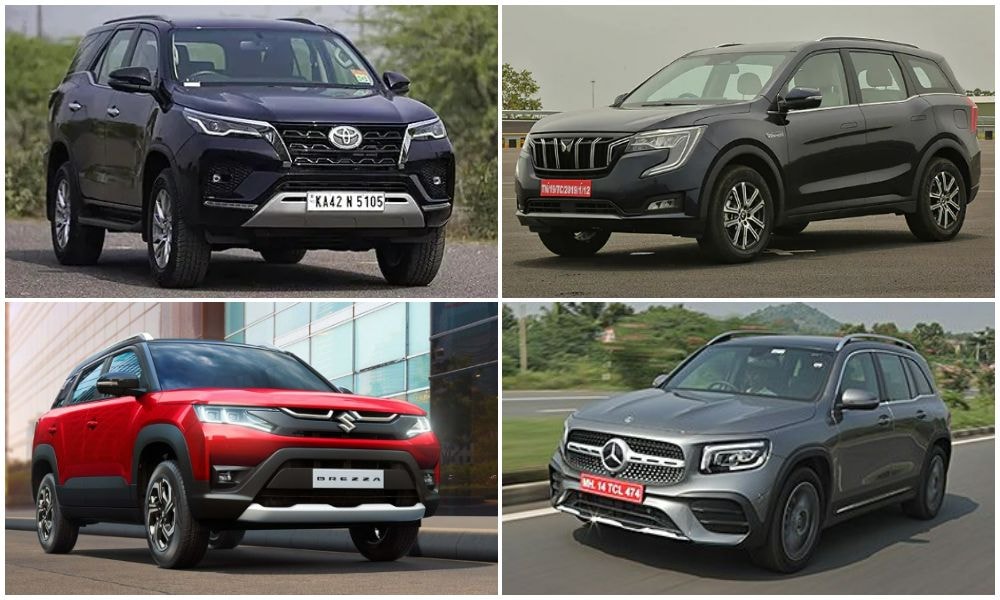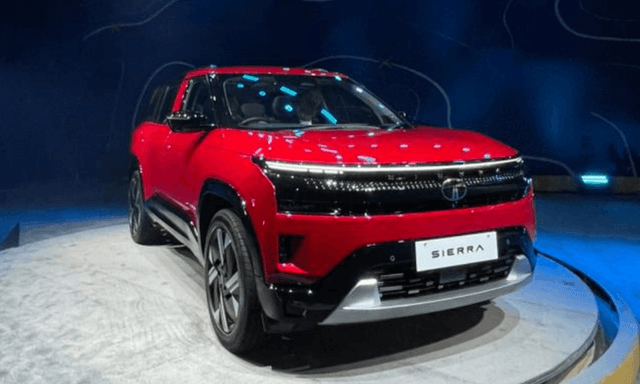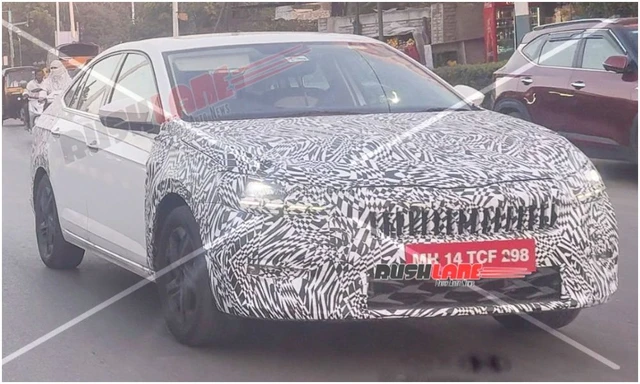GST On SUVs: Which Models Would Qualify For The Highest Rate Of Tax

- SUVs need to meet size, displacement and ground clearance criteria for GST rate
- Compact and subcompact SUVs to not attract highest tax rate
- SUVs need to be over 4m long, have over 1500 cc engines and sit 170mm off the ground
Taxes make up a major chunk of new car prices when the time comes to buy. Taxes on vehicles vary based on a variety of factors ranging from the body style, engine under the bonnet, length, price and more. In its most recent meeting, the GST council looked to provide some clarity on what cars will qualify as SUVs under the ambit of GST for the highest level of tax. SUVs in India have ranged from the subcompact (sub 4m segments) up to full-size luxury five- and seven-seat SUVs so various models could be affected differently.
First, let’s look at what qualifies as an SUV in the purview of GST. The GST Council says that for a vehicle to qualify as an SUV it should e popularly referred to as an SUV, have a length of over 4,000 mm, have an engine capacity greater than 1500 cc and have a ground clearance of greater than 170mm. Vehicles meeting all these criteria qualify as SUVs in the eyes of the GST laws and will attract the highest rate of tax ie 28 per cent GST and 22 per cent cess or about 50 per cent tax total. Vehicles not meeting these criteria will attract lower rates of cess over and above the 28 per cent GST in line with the current GST rules.
SUVs need to meet three criteria to qualify for the highest tax slab under GST as per latest clarification.
Here we look at how the SUVs on sale in India could be affected by this new ruling.
Keeping all four criteria in mind, none of the subcompact SUVs on sale in India should fall under the bracket of SUVs for GST. All models in this segment sit under the 4-metre mark and feature engines under the 1500cc mark thus not meeting two of the criteria that qualify them as SUVs.
Moving up a segment, SUVs such as the Creta, Seltos, Kushaq, Taigun, Astor, Grand Vitara and Urban Cruiser Hyryder too don’t meet all the criteria to qualify for SUVs. While all models here exceed the four-metre mark, engine capacities still fall below the 1500cc mark thus meaning that these models should not be taxed under the highest taxable bracket.
Interestingly the Thar does not meet the definition of an SUV as laid out by the GST council. While it meets the criteria for an engine over 1500 cc, ground clearance of over 170 mm and is popularly identified as an SUV, it does not meet the 4-metre mark. The current Thar measures in at 3985 mm meaning it does not meet the size criteria.
Most compact SUVs don't meet all criteria though larger models like the XUV700, Scorpio-N and Hector will qualify.
The Scorpio, Classic, Scorpio and XUV700 meet all four criteria and thus will attract the highest tax levels.
Sticking to the mid-size segment things get interesting with models such as the Alcazar and Hector. The petrol Alcazar meets all the requirements to be taxed under the highest slab of GST and cess while the diesel model does not qualify – the 1.5 diesel has a sub-1500 cc displacement. The Hector is in a similar boat with the diesel meeting the SUV criteria requirements while the petrol is sub-1500 cc and does not meet the requirement.
Tata’s Harrier and Safari meet all the criteria to qualify for the highest tax rate, as does the Hyundai Tucson. The Jeep Compass meanwhile will see the diesel attract the highest tax rate with the petrol not meeting the engine capacity criteria. The Meridian will also attract the highest tax rate.
Some models qualify for the highest tax slab for one of the engine options but not the other; Compass diesel meet all criteria while petrol doesn't meet displacement requirements.
Moving to the full size-seven seaters such as the Toyota Fortuner, MG Gloster and Isuzu MU-X, all qualify for the highest tax bracket.
Shifting to the more premium segments the BMW X1, Audi Q3 and Volvo XC40 qualify for the highest tax bracket. The GLA diesel also meets all criteria though the petrol should not attract the highest cess as it features a sub-1500 cc engine. The new GLB too sits in a similar category.
Moving a segment higher, models such as the GLC, X3, Q5, XC60, F-Pace and Macan fall within the ambit of the highest tax slab as do larger luxury SUVs such as the GLE, Grand Cherokee, X5 and Q7. Full-size models such as the Mercedes GLS and BMW X7 too will attract the highest tax slab.
It remains to be seen if there may be any amendments to the ruling for vehicles that attract the highest GST in select variants.
Trending News
Latest News
 car&bike Team | Dec 14, 2025Top-Spec Tata Sierra Accomplished, Accomplished+ Prices RevealedRegardless of the powertrain combination chosen, all Tata Sierra Accomplished+ trims cost upwards of Rs 20 lakh (ex-showroom).2 mins read
car&bike Team | Dec 14, 2025Top-Spec Tata Sierra Accomplished, Accomplished+ Prices RevealedRegardless of the powertrain combination chosen, all Tata Sierra Accomplished+ trims cost upwards of Rs 20 lakh (ex-showroom).2 mins read car&bike Team | Dec 13, 2025Skoda Slavia Facelift Spied Testing Again Ahead Of DebutThe facelifted Slavia is expected to debut in 2026 as Skoda-VW India looks to refresh its India 2.0 range.1 min read
car&bike Team | Dec 13, 2025Skoda Slavia Facelift Spied Testing Again Ahead Of DebutThe facelifted Slavia is expected to debut in 2026 as Skoda-VW India looks to refresh its India 2.0 range.1 min read car&bike Team | Dec 13, 20252026 MG Hector Facelift Interior Previewed Ahead Of DebutLatest teaser video of the upcoming Hector facelift suggests minimal cosmetic changes to the interior as well as reveals a new alloy-wheel design.1 min read
car&bike Team | Dec 13, 20252026 MG Hector Facelift Interior Previewed Ahead Of DebutLatest teaser video of the upcoming Hector facelift suggests minimal cosmetic changes to the interior as well as reveals a new alloy-wheel design.1 min read Jaiveer Mehra | Dec 13, 2025Passenger Vehicle, Two-Wheeler Sales Surge In November 2025: SIAMBoth segments reported a growth in the region of 20 per cent, though year-to-date sales growth in FY2026 was notably flatter at around 3 per cent.1 min read
Jaiveer Mehra | Dec 13, 2025Passenger Vehicle, Two-Wheeler Sales Surge In November 2025: SIAMBoth segments reported a growth in the region of 20 per cent, though year-to-date sales growth in FY2026 was notably flatter at around 3 per cent.1 min read car&bike Team | Dec 12, 2025Nissan Entry MPV Design To Be Unveiled On December 18New MPV to be the first of three new models for India by Nissan, alongside the Tekton and a three-row SUV.1 min read
car&bike Team | Dec 12, 2025Nissan Entry MPV Design To Be Unveiled On December 18New MPV to be the first of three new models for India by Nissan, alongside the Tekton and a three-row SUV.1 min read Jaiveer Mehra | Dec 12, 2025New Mini Convertible Launched At Rs 58.50 LakhDrop-top variant of the iconic Cooper hatchback available in a single Cooper S spec.1 min read
Jaiveer Mehra | Dec 12, 2025New Mini Convertible Launched At Rs 58.50 LakhDrop-top variant of the iconic Cooper hatchback available in a single Cooper S spec.1 min read
 Janak Sorap | Dec 11, 2025Harley-Davidson X440 T First Ride Review: Smarter and SharperHarley-Davidson has taken the X440 and given it a more focused and engaging twist. The result is the X440 T—essentially the same platform but updated in areas that give the motorcycle more appeal and riders more thrill.5 mins read
Janak Sorap | Dec 11, 2025Harley-Davidson X440 T First Ride Review: Smarter and SharperHarley-Davidson has taken the X440 and given it a more focused and engaging twist. The result is the X440 T—essentially the same platform but updated in areas that give the motorcycle more appeal and riders more thrill.5 mins read Shams Raza Naqvi | Dec 10, 20252025 Mini Cooper Convertible Review: More Colour On Indian RoadsThe updated Mini Cooper Convertible is set to be launched in the Indian market in the next few days. We drive it around Jaisalmer for a quick review.1 min read
Shams Raza Naqvi | Dec 10, 20252025 Mini Cooper Convertible Review: More Colour On Indian RoadsThe updated Mini Cooper Convertible is set to be launched in the Indian market in the next few days. We drive it around Jaisalmer for a quick review.1 min read Bilal Firfiray | Dec 8, 2025Tata Sierra Review: India’s New Favourite?Marking its return after a few decades, the reborn Sierra has made everyone sit up and take notice. But is it worth the hype?10 mins read
Bilal Firfiray | Dec 8, 2025Tata Sierra Review: India’s New Favourite?Marking its return after a few decades, the reborn Sierra has made everyone sit up and take notice. But is it worth the hype?10 mins read Girish Karkera | Dec 4, 20252026 Honda Prelude First Drive: Domesticated Civic Type RA sporty-looking coupe built to give customers a taste of performance but not at the expense of everyday practicality.5 mins read
Girish Karkera | Dec 4, 20252026 Honda Prelude First Drive: Domesticated Civic Type RA sporty-looking coupe built to give customers a taste of performance but not at the expense of everyday practicality.5 mins read Seshan Vijayraghvan | Nov 29, 2025Mahindra XEV 9S First Drive Review: Big Electric SUV, Bigger ExpectationsThe XEV 9S lands at a time when the EV crowd is growing fast. It’s a big, born-electric, three-row SUV that starts under 20 lakh. It sits close to the XUV700 in size, but the brief is very different. Here’s what it’s like on the road.11 mins read
Seshan Vijayraghvan | Nov 29, 2025Mahindra XEV 9S First Drive Review: Big Electric SUV, Bigger ExpectationsThe XEV 9S lands at a time when the EV crowd is growing fast. It’s a big, born-electric, three-row SUV that starts under 20 lakh. It sits close to the XUV700 in size, but the brief is very different. Here’s what it’s like on the road.11 mins read

































































































































